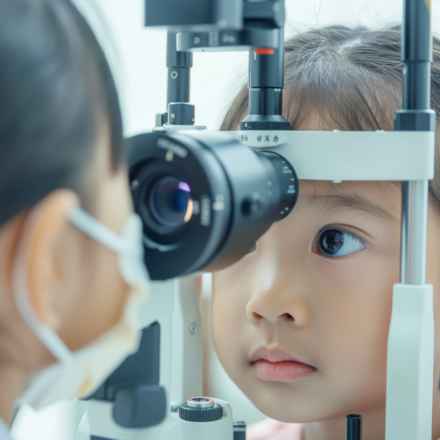World Sight Day: Myopia becoming a major global issue
Posted: Thursday 10 October 2024
Myopia, also known as short sightedness, is becoming a major global issue with new research showing one in three children is affected.
In a recent My Macular and Me webinar Dr Annegret Dahlmann-Noor, called for increased awareness and research investment in myopic macular degeneration (MMD), which she called an "increasingly common problem."
Due to MMD Dr Dahlmann-Noor said we could expect to see a significant increase in the number of visually impaired people worldwide. She said: “By 2050, we are looking at five times as many sight impaired people. 55.7 million people worldwide are expected to be sight impaired because of MMD and they are absolutely staggering numbers."
In recognition of World Sight Day, we explore myopia, its connection to serious conditions such as MMD and what you can do to protect your eyes:
What is myopic macular degeneration (MMD)?
MMD is a serious eye condition that can affect people with high myopia. As myopia progresses it can damage the back of the eye, especially the macula leading to sight loss. The condition can affect people at a much younger age than age-related macular degeneration (AMD) and is a major cause of sight impairment in people with high myopia.
The link between myopia and MMD
Not everyone with myopia gets MMD, but the higher the degree of myopia, the greater the risk. Studies have shown that around 20% of all myopic people will develop high myopia, and of those, 25% may develop MMD. This connection is why it’s essential to slow the progression of myopia in children, as unchecked myopia can lead to MMD later in life.
An estimated 10 million people worldwide had sight impairment from MMD in 2015, but this is expected to rise to 55.7 million by 2050.
Can MMD be treated?
According to Dr Dahlmann-Noor, there are five different types of MMD; myopic traction maculopathy, dome-shaped macular, lacquer cracks, myopic chorioretinal atrophy and neovascular MMD.
While many of these types are not treatable the neovascular form (nMMD), can be treated with anti VEGF injections, similar to wet AMD.
Why is MMD increasingly important?
The prevalence of myopia, especially high myopia, is rising globally. As more people develop high myopia, more cases of MMD are expected.
Dr Dahlmann-Noor said: "When you have MMD, and it affects your vision, that is taken away from you, so it affects your quality of life, it affects your ability to earn a living."
How can I reduce my risk of high myopia or MMD?
Dr Dahlmann-Noor said there are several steps you can take to lower the risk of myopia for yourself or for your child:
Spend more time outside
Regular exposure to natural light has been shown to reduce the risk of developing myopia. Aim for at least 1–2 hours a day of outdoor activity.
Take Breaks from Screens
Follow the 20-20-20 rule: Every 20 minutes, look at something 20 feet away for at least 20 seconds. This gives your eyes a break from focusing on close objects.
Limit Close-Up Work
Reduce the time spent on activities such as reading, using devices, or working on small close-up tasks. Focus on balancing near work and distance viewing.
Regular Eye Checkups
Early detection is key to managing and slowing the progression of any condition. Ensure you have regular eye exams at least every two years, especially if there's a family history of short sightedness.
Catch up on the latest in myopic macular degeneration in Dr Dahlmann-Noor's webinar.
Myopic macular degeneration
Myopic macular degeneration is a type of macular degeneration that occurs in people with severe myopia.
Support for you
We provide free information and support to those with macular disease, along with their family and friends, to help people keep their independence.
Our webinars
Watch our latest webinars online. We asked the experts the questions you wanted answered: on food, staying safe at the eye clinic, and different macular conditions. Catch up with any webinars you missed, or watch again in your own time.






